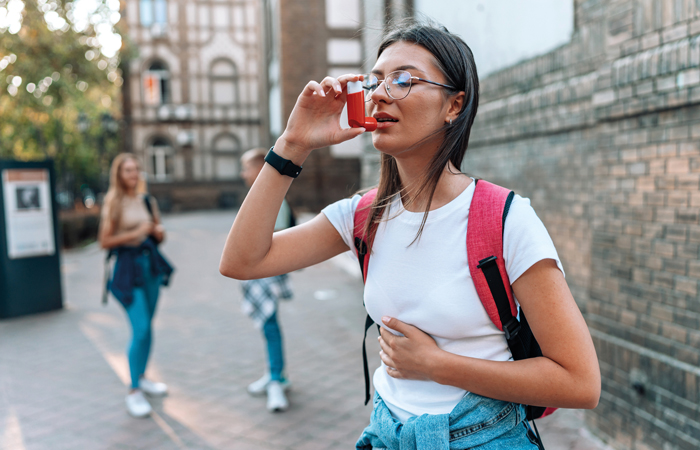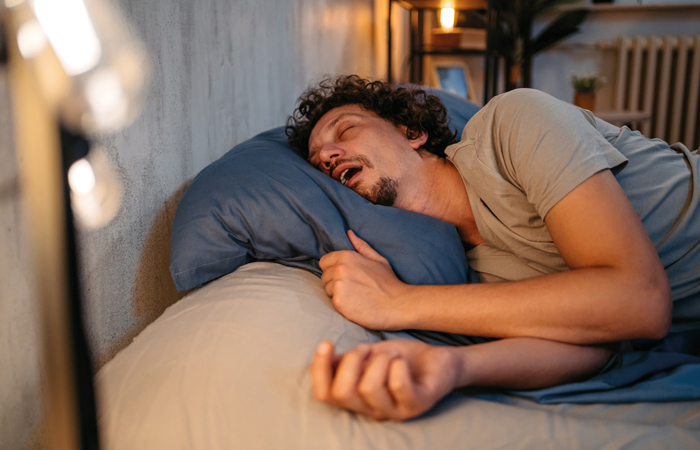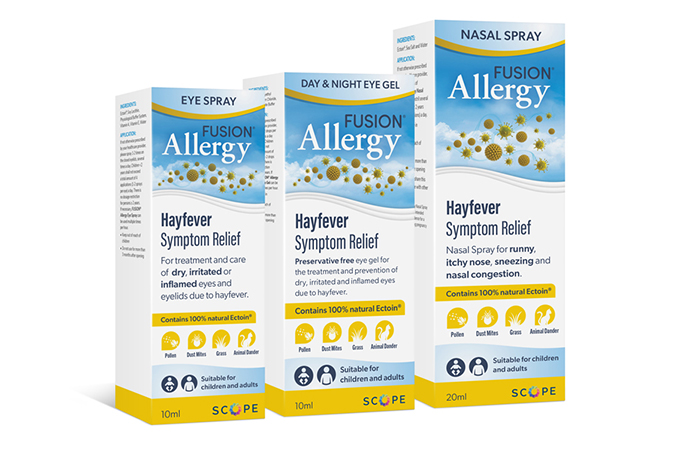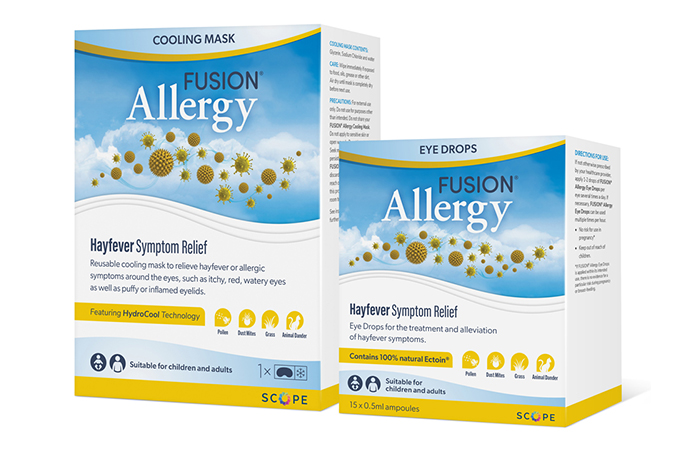In Conditions
Bookmark
Record learning outcomes
Every year, millions of people in the UK suffer from uncomfortable hayfever symptoms. It is estimated that hayfever (seasonal allergic rhinitis) affects about 10-15 per cent of children and 26 per cent of adults in the UK.
Most symptoms flare up from mid-March to September, depending on which type of pollen is triggering the allergy. If pharmacy customers are sniffing, sneezing and rubbing their eyes in February, it’s natural to assume it’s another cold. However, it’s important not to rule out an allergic cause. In February this year, the UK Health Security Agency (UKHSA) issued a warning that climate change may be lengthening the UK pollen season by potentially increasing pollen concentrations. For some types of pollen, this may mean high enough levels to trigger hayfever as early in the year as January or February.
Pollen allergy
Hayfever sufferers are sensitive to proteins in pollens produced by flowering plants. Pollen allergy can also trigger allergic asthma and eczema. Most people develop hayfever during childhood or their teenage years, and some people notice that their symptoms get better as they get older. According to the Met Office, hayfever symptoms disappear completely in around 10-20 per cent of adults. However, it’s also possible to develop hayfever for the first time in adulthood.
Hayfever is usually worse when it’s warm, humid and windy outside, as this is when the pollen count is highest. The pollen count is the amount of pollen per cubic metre observed in a particular area over 24 hours. Several types of pollen can cause hayfever, and it’s possible to be allergic to more than one type, so some people may experience symptoms throughout the duration of the hayfever season.
Grass pollen affects around 90 per cent of all hayfever sufferers, while birch tree pollen affects about 20 per cent. Oak tree, plane tree and nettle pollen are also common allergy triggers in the UK. The levels of pollen can depend on soil and air temperature, wind speed and direction, sunlight, and many other regional factors. According to 2022 research by the Pollen Services and Research Unit at the University of Worcester, the birch tree pollen season is getting more severe, while the oak and grass pollen seasons are getting earlier. Climate change is also affecting the geographical distribution of allergenic plants such as common ragweed, which is spreading across the UK. A single ragweed plant can produce a billion grains of pollen per season, and its pollen causes strong allergic reactions.

Symptom check
Hayfever symptoms are seasonal – if they occur all year round, this is called perennial allergic rhinitis and is likely to be triggered by indoor allergens, such as pets, mould or house dust mites. Hayfever symptoms usually include:
- Persistent and frequent sneezing
- A runny or blocked nose
- Itchy, red and watery eyes
- Itchy mouth, throat and ears
- Headaches
- A skin rash
- Tiredness
- Irritability.
These symptoms are most likely to be worse in the late morning as pollen rises into the air, and again from around 4pm in the afternoon until late evening, which is when pollen drops back down towards the ground. “Hayfever symptoms will occur at specific times – such as grass pollen allergy developing when the season starts in around May,” says Holly Shaw, nurse advisor at Allergy UK. “Pharmacy teams need to know how to differentiate between hayfever and the common cold. The common cold tends to come on suddenly and lasts for a short time.”
Hayfever symptoms can be severe enough to interfere with daily activities. Over half of sufferers say that the condition disrupts their sleep – leading to fatigue, a drop in productivity and taking time off work. Teenagers with hayfever are 40 per cent more likely to drop grades at school due to their symptoms. Hayfever can also lead to complications, such as sinusitis, chest infections and earache. Asthma sufferers may find that their symptoms get worse during the hayfever season too and may experience a tight chest, shortness of breath, coughing and wheezing.
“Pharmacy teams need to know how to differentiate between hayfever and the common cold”
Self-help advice
With many allergies, the symptoms improve (or disappear) if the trigger is avoided. This is much more difficult with hayfever, as pollen remains in the air throughout the spring and summer months. However, there are several things that pharmacy teams can recommend to limit pollen exposure. Allergy UK has a useful factsheet to download through its website (allergyuk.org). Useful tips to pass on to pharmacy customers include:
- Remove outdoor clothing and shower or wash hair after being outside when pollen levels are high
- Close windows at night
- Vacuum regularly, preferably with a high-efficiency particle arresting (hepa) filter
- Avoid keeping flowers in the house
- Avoid drying washing outdoors when the pollen count is high or when cutting grass
- Avoid walking in grassy, open spaces, especially during the early morning and early evening
- Apply petroleum jelly around the nostrils to trap or block pollen from entering the nose
- Install pollen filters in the car if these are not already fitted
- Drive with the windows closed
- Consider wearing wrap-around sunglasses to stop pollen getting into the eyes when outdoors
- Keep an eye on the weather forecast for information about pollen count levels and avoid going outdoors when the pollen count is medium or high.

Hayfever sufferers should dry their clothes indoors during the pollen season to avoid pollen getting onto their clothes.
Treatment options
Hayfever management involves using allergy medicines to ease symptoms. Jacquie Lee, Numark medication safety officer and information pharmacist, says that pharmacy teams should ask which symptoms customers are struggling with the most, to advise on which are the best products for them to use. “Pharmacy teams should keep in mind that for first-time sufferers, it can take several attempts to find the remedy that suits their symptoms,” she says. “Pharmacy staff should be able to help with questions around drowsiness of products, which products are best for which symptoms, drug-free options, and whether products can be used together. They should also ask customers how long they’ve been using a product before moving on to something different, as using antihistamines consistently allows them to work best.”
Antihistamines (capsules, tablets, liquids or nasal sprays) are particularly effective at easing a runny nose and sneezing but are less effective for nasal congestion. Non-drowsy antihistamines, such as acrivastine, cetirizine, fexofenadine and loratadine, are the recommended first-line option, rather than using sedating antihistamines, such as chlorphenamine. “Antihistamines are the mainstay treatments,” says Holly. “Non-sedating products are the preferable choices for school, work and driving, but many people just grab whatever they find in a supermarket or corner shop. Pharmacy advice is important, as sedating antihistamines can make them feel groggy and tired.”
Corticosteroid nasal sprays reduce inflammation directly in the nose. They need to be used daily to work properly and can be used throughout the whole hayfever season to prevent symptoms. Ideally, the sprays should be used from one or two weeks before customers think their hayfever will start, as they can take a few days to work. Corticosteroid nasal sprays can cause side effects, such as stinging or burning inside the nose, a dry, irritated throat, an unpleasant taste, or nosebleeds.
“Demonstrating how to use nasal sprays is important, whether these are on prescription or bought over the counter,” explains Holly. “Nasal sprays are often misused, which means the hayfever is being under-treated or over-treated. People may say these medicines aren’t working when they haven’t been using them properly. The nasal sprays will only achieve maximum benefit if people are being shown how to use them.”
Eye drops containing antihistamines or sodium cromoglicate may ease sore, itchy hayfever eyes. Allergy eye sprays or soothing eye masks may also help.
Some customers may prefer to try a drug-free approach. “Allergen barrier balms will trap pollens before they get into the nose,” says Holly. “Saline nasal sprays, washes and rinses are effective at cleaning and removing allergens from the nasal passages.”
If symptoms are affecting the customer’s quality of life, they should be referred to their GP to discuss stronger prescribed treatments or immunotherapy. This involves having small amounts of pollen (as an injection or tablet) to build up the body’s immunity to pollen. Patients usually need to start this treatment around three months before the hayfever season begins. Immunotherapy isn’t suitable for everyone and is a specialist treatment that may not be available everywhere in the UK. “If they have tried a combination of treatments – antihistamines, nasal sprays and eye drops – and they are still suffering, they may be referred for grass pollen immunotherapy,” says Holly. “Another red flag symptom is if both hayfever and asthma occur together. This needs proactive management from the GP. If hayfever isn’t being well managed, this can impact on the lower airways.”
The Fusion Allergy range is proven to be as effective as antihistamines at relieving allergic symptoms in the eyes (conjunctivitis), eyelids, and nose (rhinitis), claims manufacturer SCOPE Healthcare. Containing the naturally occuring molecule Ectoin®, the drug-free and preservative- free formula creates a protective barrier against allergens whilst moisturising the lining of the nose and reducing inflammation, adds the company.
The range includes Fusion Allergy Nasal Spray, Fusion Allergy Eye Drops, Day & Night Eye Gel, Cooling Eye Mask and Eye Spray.
SCOPE Healthcare: 0808 175 3200
Nasal conditions
Although hayfever can cause some nasal symptoms, there are a whole host of other nasal conditions that can occur too.
Sinusitis (swelling of the sinuses) is often caused by a viral infection or an allergy. It usually clears up on its own within four weeks, but can be very uncomfortable. The main symptoms include pain and swelling around the cheeks, eyes or forehead, a blocked or runny nose, green or yellow mucus coming from the nose, a fever, a headache and toothache. Mild sinusitis may be eased by drinking plenty of fluids, resting, taking painkillers (paracetamol or ibuprofen), using a decongestant nasal spray or drops, and rinsing the inside of the nose with a saline nasal spray or solution. If the symptoms persist, a GP may prescribe a steroid nasal spray or, occasionally, antibiotics. People with persistent sinusitis should be seen by an ENT consultant.
Nosebleeds are often caused by internal damage (from blowing the nose too hard) or a dry nose (due to dry atmospheres). If someone has a nosebleed, they should:
- Sit down and lean forward with their head tilted forward and their mouth open
- Pinch their nose just above the nostrils for 10-15 minutes
- Breathe through their mouth.
Holding an ice pack (or a bag of frozen peas wrapped in a towel) on top of the nose may help to reduce the flow of blood. If a nosebleed isn’t stopping, starts after a blow to the head, or is causing weakness, dizziness or difficulty breathing, customers should go to A&E.
Post-nasal drip is when excessive mucus from the nose and sinuses drains backwards into the throat (often described as ‘catarrh’). It can cause excessive throat clearing, frequent swallowing, a sore throat, a lump in the throat, a cough and feeling nauseous. The symptoms may be due to an allergy, infection, chronic sinusitis or acid reflux – and successful treatment involves resolving any underlying condition. Drinking more fluids and limiting caffeine may help to thin out the mucus secretions, along with using saline nasal sprays and rinses.
Snoring can disturb sleep and cause tiredness in the day – for partners, as well as for snorers. It may be triggered by getting older, being overweight, drinking alcohol or smoking. Snoring sometimes runs in families and may also be linked to a blocked nose or sleeping position (back-sleepers tend to snore the most). Addressing risk factors (e.g. losing weight, giving up smoking, treating a blocked nose) may help to reduce snoring. Pharmacy treatments include adhesive nasal strips and inserts to keep the nasal passages open, and throat sprays to reduce the throat vibrations that cause snoring. A dentist may be able to fit a mouth device that adjusts the position of the jaw. Partners may wish to use earplugs. Snoring isn’t usually caused by anything serious, but if someone wakes with a loud grunt or snort and seems to be struggling for air, they should speak to their GP as they may have obstructive sleep apnoea.

UK pollen seasons
If pharmacy customers keep track of their hayfever symptoms during the spring and summer, they may be able to work out roughly which types of pollens they are allergic to. This may help them to prepare for the pollen season in advance each year, with self-help measures and treatments.
According to the Met Office, hayfever seasons may start at different times depending on where people are in the UK. In Northern England, for example, the seasons tend to start later and finish earlier, as there is generally less pollen. Urban areas have lower pollen counts than the countryside, and inland locations have more pollen than around the coast. In general, tree, grass and weed pollen seasons usually follow these specific patterns:
- March to May: Tree pollens, such as birch, alder, hazel and horse chestnut
- May to July: Grass pollen
- June to September: Weed pollen (such as dock and mugwort).
The Pollen Services and Research Unit website has a more detailed pollen calendar, showing when the main allergenic plants are in flower (and when their pollen counts are highest). Examples include:
- Alder: January to mid-April
- Hazel: mid-January to mid-April
- Plane: mid-March to late May
- Oak: April to mid-June
- Grass: May to early September
- Rapeseed: late March to mid-July
- Nettle: early May to late September
- Mugwort: late June to early September.
Pharmacy customers can check the pollen count in their local ahttps://www.metoffice.gov.uk/rea using pollen forecasts on the news or smartphone apps or by visiting the Met Office website (metoffice.gov.uk).



